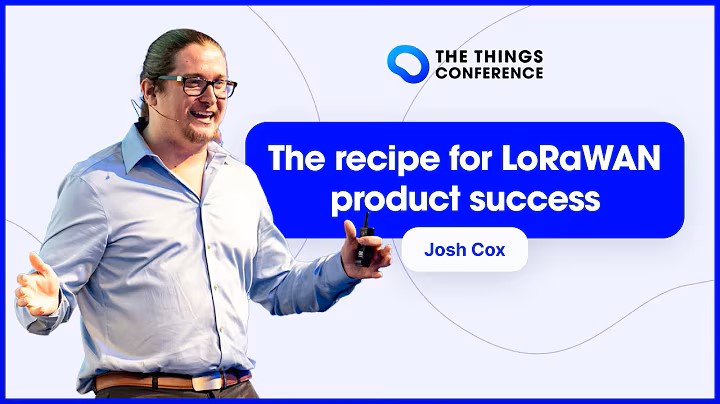Designing IoT Products for Success: Avoiding Development Pitfalls
Introduction
In the rapidly evolving IoT landscape, creating a successful product requires more than innovative ideas—it demands a meticulous approach to hardware and software design. Many IoT projects falter due to avoidable pitfalls in areas like hardware architecture, RF tuning, provisioning, and scalability planning. This guide dives into common challenges and offers actionable solutions, drawing on Oxit’s extensive experience in delivering IoT engineering excellence.
Choosing the Right Hardware Architecture
Module vs. Chip-Down: Weighing the Trade-Offs
One of the earliest and most critical decisions in IoT product design is selecting between a module-based design or a chip-down approach. Each offers distinct advantages depending on your project’s goals and resources.
- Module-Based Designs: These pre-certified modules are perfect for quick time-to-market, lower upfront costs, and streamlined prototyping. They reduce complexity, especially for teams new to IoT development. Explore Oxit’s Multi-Connectivity Module, designed to simplify IoT development with LoRaWAN and Amazon Sidewalk integration.
- Chip-Down Designs: Ideal for high-volume production, this approach offers greater flexibility and cost savings in the long term. However, it demands in-depth expertise in RF tuning, layout design, and compliance testing.
Case Example: Oxit recently helped a client transition from a module to a chip-down design as their product scaled. This shift reduced production costs by 20% while maintaining performance and regulatory compliance.
For a detailed cost comparison and breakeven analysis, read our full breakdown here.
Tuning RF Design for Real-World Performance
Overcoming RF Challenges
IoT devices rely heavily on robust RF design, but real-world conditions can wreak havoc on signal integrity. Common challenges include:
- Environmental Interference: Metal surfaces, walls, and dense building materials can degrade RF performance.
- Improper Antenna Placement: Many designs fail due to suboptimal antenna configurations.
Solutions for Reliable Connectivity
- Real-World Testing: RF designs must be tested in environments that mimic deployment scenarios, including interference from nearby devices and physical obstructions.
- Expert RF Tuning: By calibrating the design with advanced tools and techniques, Oxit ensures optimal performance even in challenging conditions.
Case Example: Oxit resolved RF range issues for a client deploying sensors in industrial facilities by fine-tuning antenna placement and leveraging advanced calibration methods.Watch Josh Cox discuss LoRaWAN design challenges in this presentation at The Things Conference.
Scaling Provisioning for Large Deployments
The Challenge of Mass Provisioning
Provisioning becomes a bottleneck as IoT projects scale from hundreds to thousands of devices. Manually configuring devices not only delays deployment but also increases the risk of errors.
Streamlined Solutions
- Bulk Provisioning: Implement automated provisioning tools to handle large batches efficiently.
- Secure Key Management: Use encrypted methods to ensure secure provisioning, preventing vulnerabilities during deployment.
Case Example: Oxit worked with a client deploying 100,000+ sensors, designing an automated provisioning system that reduced deployment time by 30% and ensured consistent security practices. Learn more about our FUOTA Portal, designed for seamless and secure provisioning at scale.
The Importance of Firmware Updates
Avoiding the Firmware Trap
Neglecting firmware updates can lead to major operational failures or security breaches, especially when devices are deployed at scale. Firmware should always accommodate:
- Over-the-Air (OTA) Updates: These enable seamless fixes and upgrades without retrieving devices from the field.
- Memory and Power Planning: Ensure the hardware has sufficient capacity to handle future updates.
Learning from Success
A major retailer partnering with Oxit implemented OTA updates for their IoT-enabled retail security systems. This approach allowed them to address critical bugs post-deployment without interrupting operations. Learn more about Oxit’s innovative approach in this interview with Josh Cox.
Strategic Planning for Product Lifecycle
IoT devices must be built not only for today’s requirements but for tomorrow’s demands. Key considerations include:
- Scalability: Design with excess memory, power, and connectivity features to accommodate future software upgrades and functionality.
- Redundancy: Include fail-safes to mitigate disruptions from network outages or hardware malfunctions.
Case Example: Oxit’s lifecycle planning expertise helped a startup future-proof their smart home devices, ensuring compatibility with emerging technologies like Amazon Sidewalk and Matter.
Conclusion: Build Smarter with Oxit
Avoiding pitfalls in IoT product development requires the right strategy, expertise, and tools. By focusing on robust hardware design, scalable provisioning, reliable RF performance, and OTA updates, businesses can set their IoT products up for long-term success.
Oxit stands ready to guide you through this journey. From hardware design to cloud integration, we provide end-to-end IoT solutions tailored to your needs.
- Contact Us: Connect with our team to discuss your IoT project.
- Learn More: Explore our Multi-Connectivity Module designed to simplify IoT development.
- Discover FUOTA: Streamline provisioning with the OxTech FUOTA Portal.



